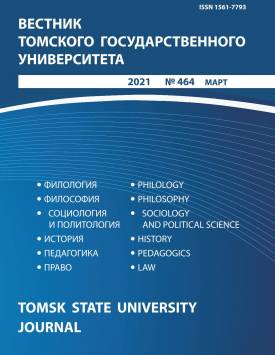Еnactivist Criticism of the Neurobiological Theory of Consciousness
The article considers the main arguments against the neurobiological theory of consciousness from the point of view of the enac-tivist approach within the philosophy of mind. The neurobiological theory of consciousness, which reduces consciousness to neural activity, is currently the dominant approach to the mind-body problem. The neurobiological theory emerged as a result of advances in research on the phenomena of consciousness and through the development of technologies for visualizing the internal processes of mind. However, at the very heart of this theory, there is a number of logical contradictions. The non-reductive enactivist approach to consciousness, introduced in this article, contributes to the existing argumentation against the reduction of consciousness to neural processes with remonstrations that take into account the modern neuroscientific data. The article analyzes the argumentation of the sensorimotor enactivism developed by A. Noe and offers the account of the teleosemantic approach to the concept of information provided by R. Cao. The key problems of the neurobiological theory of consciousness are highlighted, and the objections emerging within the framework of the enactivist approach are analyzed. Since the main concepts on which the neural theory is based are the concepts of neural substrate, cognition as representation, and information as a unit of cognition, the author of the article presents three key enactivist ideas that oppose them. First, the enactivist concept of cognition as action allows us to consider the first-person experience as a mode of action, and not as a state of the brain substrate. Second, the article deals with the “explanatory externalism” argument proposed by Noe, who refutes the image of cognition as a representation in the brain. Finally, in order to critically revise the concept of information as a unit of cognition, the author analyzes Cao's idea, which represents a teleosemantic approach, but is in line with the general enactivist argumentation. Cao shows that the application of the concept “information” to neural processes is problematic: no naturalized information is found in the brain as a physical substrate. A critical revision of beliefs associated with the neural theory of consciousness leads us to recognize that there are not enough grounds for reducing consciousness to processes that take place in the brain. That is why Noe calls expectations that the visualization of processes taking place in the brain with the help of the modern equipment will be able to depict the experience of consciousness the “new phrenology”, thus indicating the naive character of neural reduction. The article concludes that natural science methods are insufficient for the study of consciousness.
Keywords
enactivism, embodied cognition, hard problem of consciousness, neurobiological theory of consciousnessAuthors
| Name | Organization | |
| Shabalina Anastasia O. | Institute of Philosophy and Lаw of the Siberian Branch of the Russian Academy of Sciences | nastyaplr1003@gmail.com |
References

Еnactivist Criticism of the Neurobiological Theory of Consciousness | Vestnik Tomskogo gosudarstvennogo universiteta – Tomsk State University Journal. 2021. № 464. DOI: 10.17223/15617793/464/9
